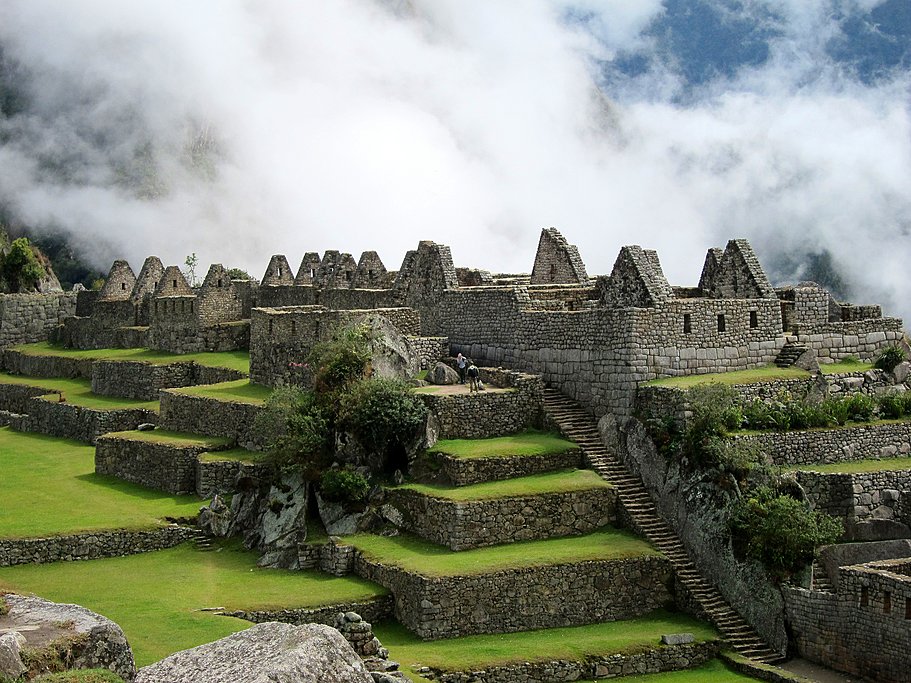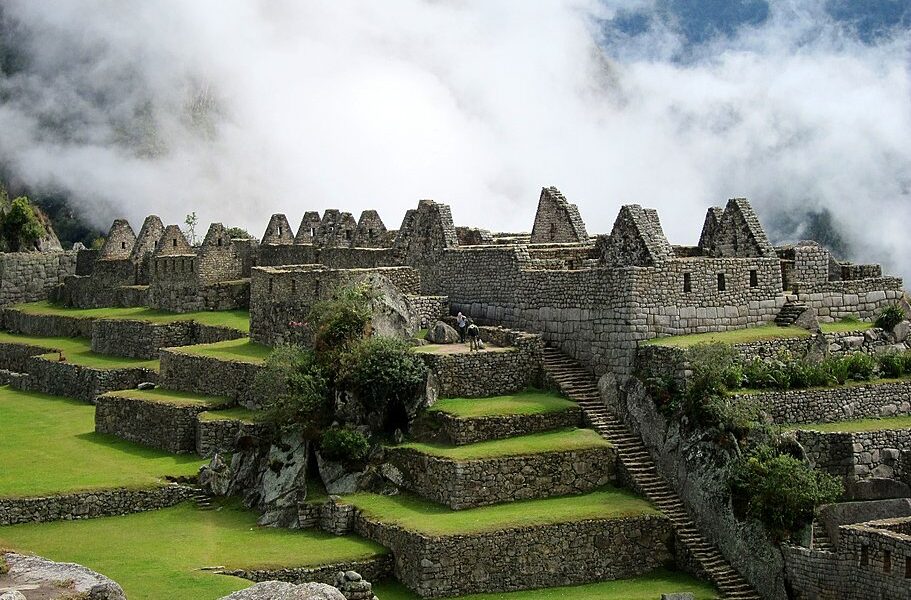
March is a solid time to visit Peru as the rains start to diminish in the Sacred Valley. The Inca Trail reopens and there are plenty of peaceful treks to choose from before the high season begins. You’ll also have dry, sunny weather along the Pacific coast with lowered rates and great swimming and surfing conditions. Find out what to do and where to go in this monthly guide.
Peru in March: A Comprehensive Guide
Peru, a land of ancient wonders and breathtaking landscapes, offers a diverse range of experiences for the intrepid traveler. In March, as the tail end of the Peruvian summer gracefully bows out, the country presents a tapestry of climatic variations, dependent on the specific region you choose to explore. Understanding these distinct weather patterns is crucial to planning your perfect Peruvian adventure. The country is broadly divided into three principal climate zones: the desert coastal strip, the Andean highlands, and the expansive Amazonian rainforest.
The Weather in Peru during March
Let’s delve into the nuances of the weather you can expect in each of these zones during the month of March:
The Desert Coastal Strip: This arid region, characterized by its sun-drenched beaches and minimal rainfall, encompasses destinations such as Máncora, Trujillo, Lima, Paracas, and Arequipa. March offers pleasantly warm weather, making it an ideal time for coastal exploration. Near Lima, the average high temperature hovers around a comfortable 79° F (26° C), while the lows settle at a balmy 66° F (19° C). The Pacific Ocean beckons with its inviting waters, perfect for swimming and a variety of watersports. Keep in mind that locations south of Lima tend to experience slightly cooler temperatures compared to their northern counterparts, owing to their greater distance from the equator.
The Andean or Highlands Zone: This elevated region, home to iconic destinations like Huaraz, Machu Picchu, Cusco, and Lake Titicaca, experiences March as the final chapter of its wet season. Expect light to heavy rains, adding a touch of mystique to the already stunning landscapes. While the presence of clouds, fog, and moisture might seem discouraging, they shouldn’t deter you from visiting. This is a time when the flora and fauna flourish in abundance, painting the landscapes in vibrant hues. Moreover, the showers are often interspersed with periods of sunshine, offering ample opportunities for exploration. In the Cusco region, summer temperatures generally reach highs of 65° F (18° C) and lows around 42° F (6° C). It’s essential to pack layers, as temperatures can fluctuate rapidly, especially when the sun dips behind the clouds.
The Amazonian Rainforest: Covering a vast expanse of eastern Peru, the Amazonian rainforest boasts a warm and humid sub-tropical climate that prevails throughout the year. March tends to be one of the rainiest months in this region, so be prepared for frequent showers. Key destinations in this zone include Iquitos, Tarapoto, Manu, and Puerto Maldonado. In Iquitos, expect average highs of around 88° F (31° C) and lows of approximately 72° F (22° C). The tropical rains typically manifest as afternoon downpours or thunderstorms, with an average rainfall of about 14 inches in March.
Cost and Crowds in March
As March unfolds, the renowned Inca Trail reopens, marking the beginning of an increase in tourist arrivals. This trend becomes particularly pronounced as Easter draws near. If Holy Week falls in March rather than April, be prepared for a significant surge in crowds and the accompanying high-season prices. Hotel rates will inevitably spike, and availability will become scarce, making advance reservations absolutely essential.
However, with the exception of Holy Week, traveling to the Sacred Valley during this period offers several distinct advantages. You’ll encounter fewer crowds, allowing for a more intimate experience of the ancient sites. The scenery is lush and verdant, adorned with blooming orchids, creating a visually stunning backdrop. Additionally, you can often secure more favorable rates for flights and hotels.
In general, the mountains and canyons tend to be less frequented by trekkers during this time of year, making March an excellent choice for those seeking tranquility and solitude amidst the breathtaking landscapes. Be prepared for potentially muddy trails, but the reward of peaceful exploration is well worth it.
Conversely, as tourism along Peru’s coastline begins to wane and shift inland, March presents an opportune moment to visit the beach towns. The weather remains pleasant, the crowds thin out, and prices start to decrease, making it an ideal time for a relaxing coastal getaway.
Where to Go in Peru during March
March is considered an excellent time to explore Peru’s coastline, as the water temperatures are typically at their most inviting for swimming, marking the culmination of the summer season. The beaches south of Lima, including Punta Hermosa, Asia, Pulpos, Punta Negra, San Bartolo, and El Silencio, are particularly popular. Further south along the coast lies the Paracas National Reserve, a natural wonderland characterized by its captivating sand dunes and cliffs, pristine beaches, and diverse array of fauna.
For those seeking a vibrant and youthful atmosphere, the northern coast offers several cool local spots, such as Máncora, renowned for its unspoiled beaches and laid-back vibes. Nearby Las Pocitas provides a more secluded experience, boasting some of the area’s finest hotels and resorts.
Furthermore, March is a favored month for travelers wishing to combine their Peruvian adventure with a visit to the enchanting Galapagos Islands of Ecuador.
While Peru’s interior experiences wetter conditions during this time, this shouldn’t dissuade you from embarking on trekking or sightseeing expeditions. As previously mentioned, March heralds the reopening of the Inca Trail, providing the only direct route into the park through the iconic Sun Gate. Even with the trail’s reopening, crowds remain relatively lighter compared to the peak season.
Venture off the beaten path to Northern Peru, a region often overlooked by tourists. Here, you’ll discover breathtaking landscapes teeming with diverse bird species, pre-Incan archaeological treasures such as the adobe city of Chan Chan, and abundant nature within the cloud forest, offering countless opportunities for treks, hikes, and exploration of lakes and waterfalls.
In Southern Peru, straddling the border between Peru and Bolivia in the majestic Andes mountains, lies Lake Titicaca, one of South America’s largest lakes. Revered as the birthplace of the Incas, this region is also home to numerous ancient ruins. The Titicaca National Reserve safeguards a variety of rare aquatic species, including the impressive giant frogs. The climate is generally agreeable during this time, with minimal rainfall. However, due to the high altitude, nights can be quite chilly, so packing accordingly is essential.
What to Do in Peru during March
Beaches and Watersports: With summer still lingering in Peru, locals tend to flock to the beaches. The sport of surfing is gaining increasing popularity in Peru, and numerous beach towns north of Lima, such as Cabo Blanco (home of the “Peruvian pipe”), Chicama, and Máncora, offer fantastic surf conditions and a relaxed atmosphere. Kiteboarding, stand-up paddleboarding, diving, and whale- and dolphin-watching are also popular activities. These towns, along with the beaches south of Lima, provide ideal settings for leisurely days spent basking in the sun.
Wildlife Viewing on the Ballestas Islands: Accessible by tour boat from the coastal town of Paracas (near Pisco), the Ballestas Islands, often referred to as the “Galapagos Islands of Peru,” are home to a remarkable array of rare birds, including pelicans, penguins, Peruvian boobies, and Inca terns. It’s also common to spot sea lions, turtles, dolphins, and even whales within the park. Thanks to its prime location on the Pacific coast, day trips to the Ballestas Islands can be easily combined with exploring the captivating sand dunes of Huacachina.
Trekking: Peru has long been a magnet for outdoor enthusiasts, and trekking remains the most popular activity. However, it’s important to note that March tends to be one of the wettest months in the Andes. For those who don’t mind a bit of rain, numerous overnight trekking opportunities await. For shorter excursions, consider the day hikes in the Sacred Valley near Cusco, offering visits to waterfalls, caves, and hot springs.
History and Inca Ruins: Within the Sacred Valley, you’ll encounter a wealth of fascinating ruins, including Ollantaytambo, Sacsayhuaman, and Pisac, all located near the historic colonial city of Cusco. While these smaller sites are more dispersed than Machu Picchu, they offer a rich tapestry of Spanish colonial villages, vibrant handicraft markets, and captivating Incan history.
City Culture in Lima: Despite its arid climate and infrequent rainfall, the city of Lima is often overlooked in favor of Cusco. However, Peru’s capital is a treasure trove of history and culture, boasting stunning architecture, magnificent cathedrals, intriguing museums, a burgeoning culinary scene (including #6 and #7 on The World’s 50 Best Restaurants list), vibrant nightlife, and exceptional shopping opportunities. Be sure to dedicate an evening to witnessing the breathtaking sunset overlooking the bluffs at Miraflores.
March Events in Peru
Peru is renowned for its numerous festivals, with literally thousands taking place across the country each year. Some notable events in March include:
Fiesta de la Vendimia: If you find yourself in Lima during March, don’t miss the opportunity to witness this vibrant festival. Celebrating over 75 years of tradition, the Fiesta de la Vendimia pays homage to Peru’s rich ancestry and the diverse varieties of grapes cultivated in the country, particularly the transformation of grapes into exquisite wines. The celebration reaches even greater heights if you’re visiting the southern coast’s two principal wine regions, Lunahuaná and Ica, with harvest festivals and traditional grape stomping.
Semana Santa: With approximately 85-90% of Peruvians identifying as Catholic, the week leading up to Easter (whether it falls in March or April) is considered an exceptionally holy period. Festivities and processions take place along the streets, particularly in Ayacucho.
Festival del Verano Negro: The first week of March marks the culmination of the nation’s largest celebration of Afro-Peruvian culture in Chincha, the cultural capital of African heritage in Peru. This lively celebration of Afro-Peruvian customs features an abundance of dancing, gastronomy, poetry competitions, and colorful street parades.
The new word count is: 1793
B-2080

